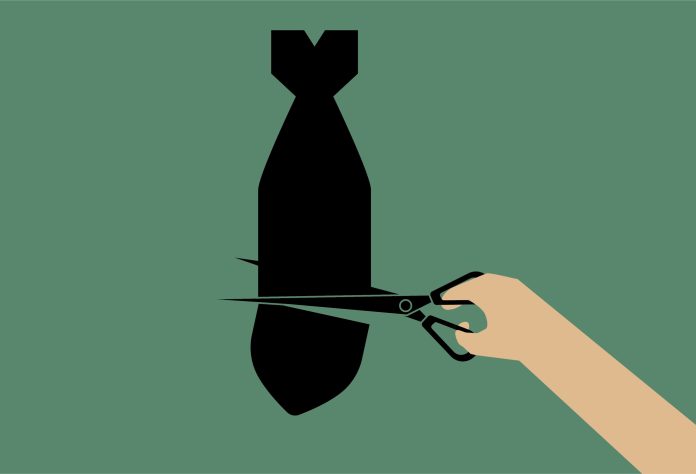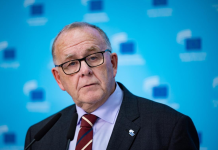With global tensions rising, this article explores the increase in nuclear weapons spending and its implications for international security and humanitarian priorities
Nuclear weapons, mankind’s most harmful invention, are back in our minds and hearts. There is an increased interest and fear at a global scale about the risk of their use, especially after the recent wars in Ukraine and Gaza. The topic was amplified for the public by the blockbuster Oppenheimer, the Fallout TV Programme, and the bestselling book Nuclear War: A Scenario.
The UN General Secretary Antonio Guterres posted on X, in March this year, “A nuclear war must never be waged — because a nuclear war can never be won. I have urged the Security Council to state clearly that living with the existential threat of nuclear weapons is unacceptable, and to lead the way to a world free of these instruments of annihilation.”
The world, as we know it, seems to be at an inflection point where the decision is for more war or …peace. Do we now have more reasons to fear war?
The increased rise of spending in 2023
After the end of the Cold War, the spending on nuclear weapons was stationary, but last year, we witnessed a new rise, led by the US, which spent more than all the other nuclear powers combined, according to a recently published report by ICAN (The International Campaign to Abolish Nuclear Weapons).
There is an exclusive club, made of only nine countries (US, UK, France, Russia, Israel, Pakistan, India, China, and North Korea) – the Nuclear Powers Club. Even though we talk about only 9 countries, the amounts spent on the nuclear weapon industry are unbelievable. The Report shows amounts of $91.4B per year ($250M per day) spent in 2023 alone, 13% more than the previous year.
This means $2,898 per second is spent on nuclear weapons. The distribution per state is led by the US at $51.5. China surpassed Russia as the second top of spending with $11.9, and Russia came in third, as it spent $8.3 billion. The UK spent $8.1 billion (an increase of 17.1 %from the previous year) on nuclear weapons. All these enormous amounts of money are taxpayers’ money. However, there are 100 countries that have joined the UN Treaty for the Prohibition of Nuclear Weapons.
All the above-mentioned countries, according to Susi Snyder from International Campaign to Abolish Nuclear Weapons (in an Interview for DW), are spending money on modernising their arsenal: new airplanes, new submarines, and new missile systems to deliver nuclear weapons wherever they want. All these amounts of money are spent on weapons that these countries hope and should not ever use. In the US, according to Susi Snyder, some companies make large profits by building weapons of mass destruction. The above-mentioned report talks about companies that have contracts for the next decades of over $387 billion.
Nuclear weapons are a business product that needs advertising, and the above-mentioned report shows that the nuclear weapon producers spent $118 million lobbying the government in the US and France only.
The Stockholm International Peace Institute also launched on June 17th their annual report referring to the state of armaments, disarmament, and international security. Its director, Dan Smith, said, ‘While the global total of nuclear warheads continues to fall as cold war-era weapons are gradually dismantled, regrettably we continue to see year-on-year increases in the number of operational nuclear warheads. This trend seems likely to continue and accelerate in the coming years and is extremely concerning.’
A new nuclear race: Why is this happening?
All the nuclear powers believe that the spending is essential for their security. It is not a trend that we expect to decrease in the following years. The nine players are pointing at each other for the reason they have increased their spending. Another reason is that the recent conflicts in Ukraine and Gaza made the nuclear club countries want to replace or modernise their nuclear weapon arsenal so that they get ready for a potential escalation.
USA collectively possess nearly 90 per cent of the world’s nuclear weapons
Transparency and Proximity Concerns
Russia and the USA collectively possess nearly 90 percent of the world’s nuclear weapons, according to the SIPRI Report. Their military stockpiles of usable warheads have remained stable in 2023, though Russia has deployed about 36 more warheads with its operational forces since January 2023. Transparency regarding nuclear arsenals in both countries has decreased following Russia’s full-scale invasion of Ukraine in February 2022, and discussions about nuclear-sharing arrangements have gained prominence.
In 2023, there were several public claims that Russia had deployed nuclear weapons on Belarusian territory, though there is no definitive visual evidence to confirm this deployment. Besides their active military stockpiles, Russia, and the USA each have over 1,200 warheads that have been retired from service and are in the process of being dismantled.
Weapons or food? Where is our humanity?
To give you a perspective on the matter, by comparison, The United Nations World Food Programme, a programme aimed at ending world hunger, raised only $8.3B in 2023, and it has 120 participant countries. So, why do we really care more about power or humanity?
Remaining aware
Firstly, as we aim at with this article, we, the public, need to become increasingly aware and alert to how our tax money is used. Our votes in July can make a difference, too.
There are also NGOs and various forums that advocate for ending nuclear weapons, one of these being the Campaign for Nuclear Disarmament, which offers diverse ways to contribute.
The Vienna Centre for Disarmament and Non-Proliferation is another respected forum that promotes international peace and security through research, dialogue, and capacity building on non-proliferation. Its valuable research and analysis have offered actionable policy recommendations.
Conclusions on global nuclear weapon spending
The global spending on new nuclear weapons leads to the fact that the nuclear arms race is back, and, unfortunately, we might be leading to a new global competition (or threat) of mutual potential destruction. We all need to stay cautious as these weapons, as we know from our history, can cause enormous civilian harm over several generations.
Hunger, climate change or agreeing on the related to the use of AI (Artificial Intelligence) should be among our global priorities rather than weapons that could end our world.
This piece was written and provided by Dr Alina Vaduva and Prof Kirk Chang











